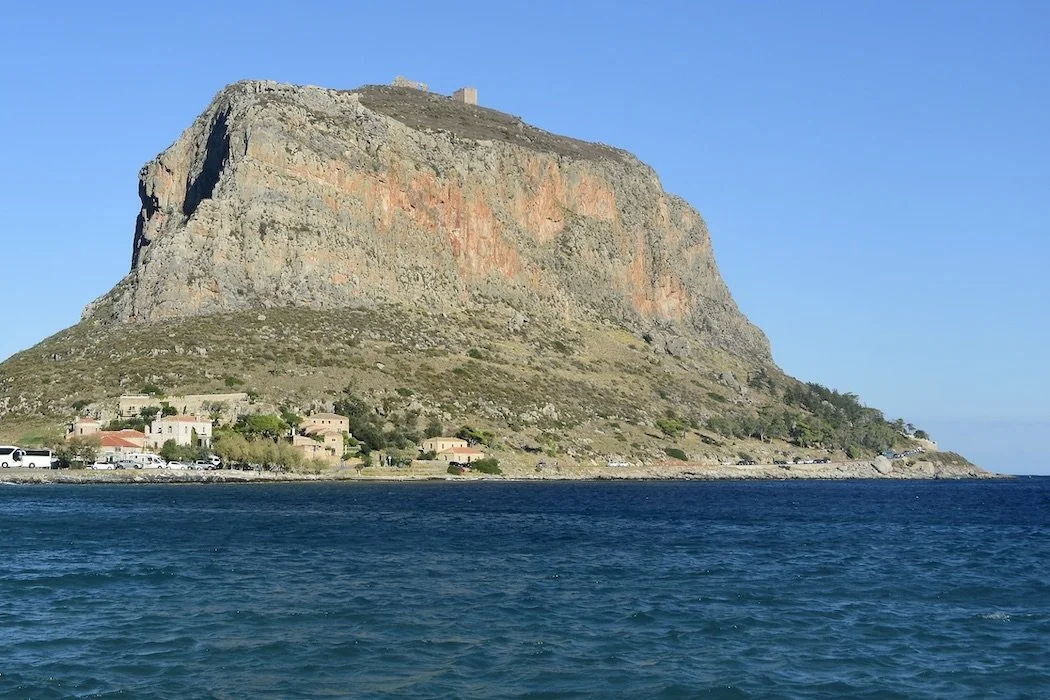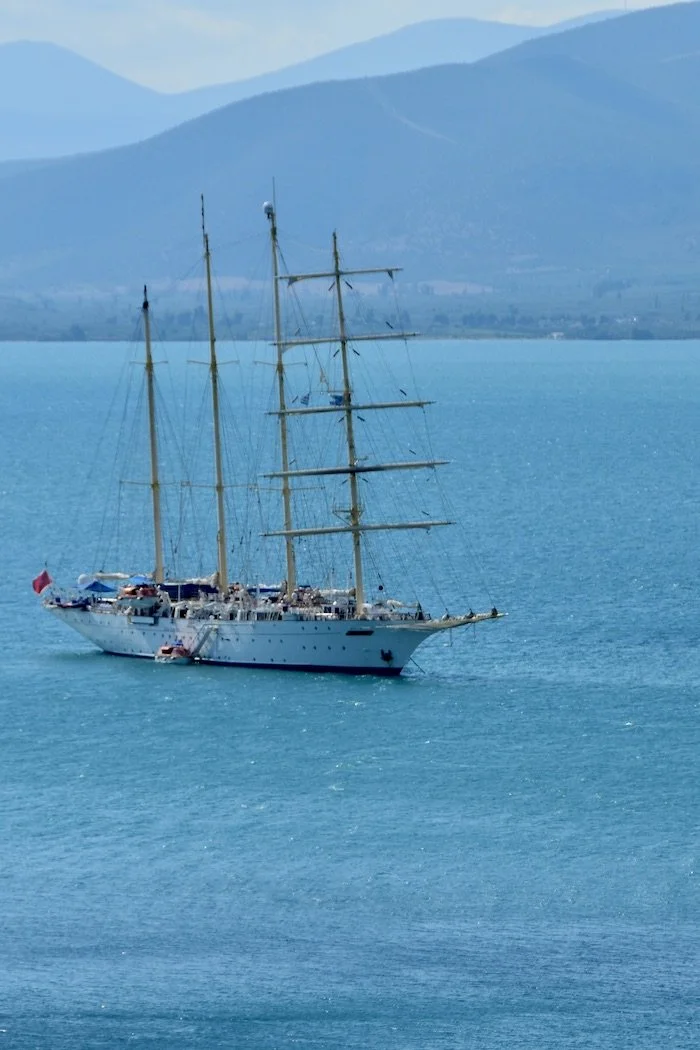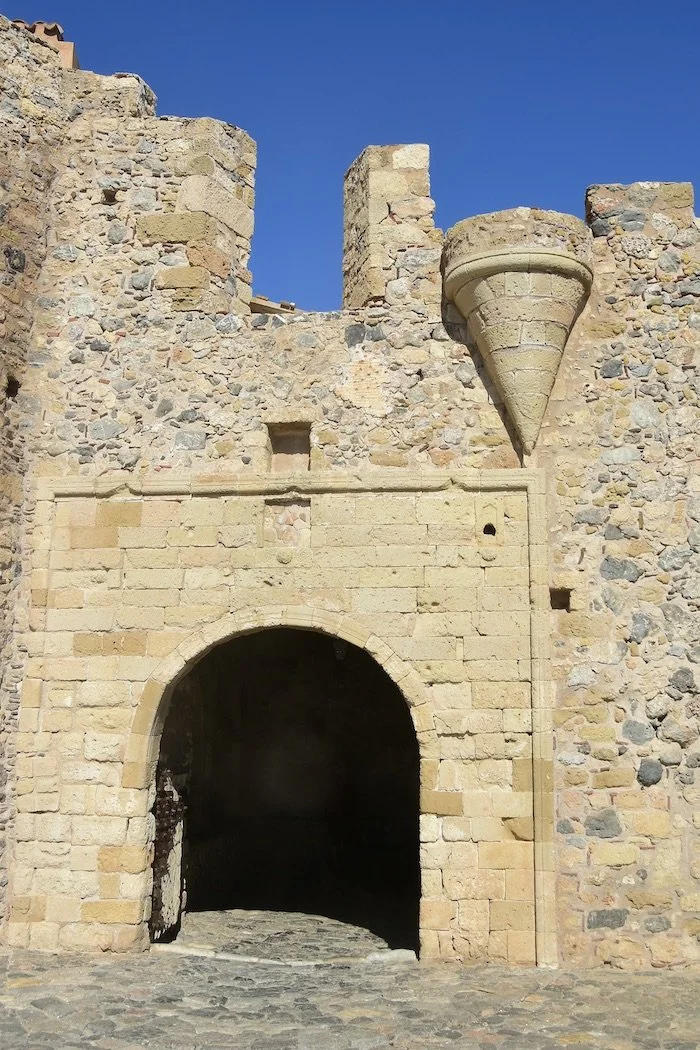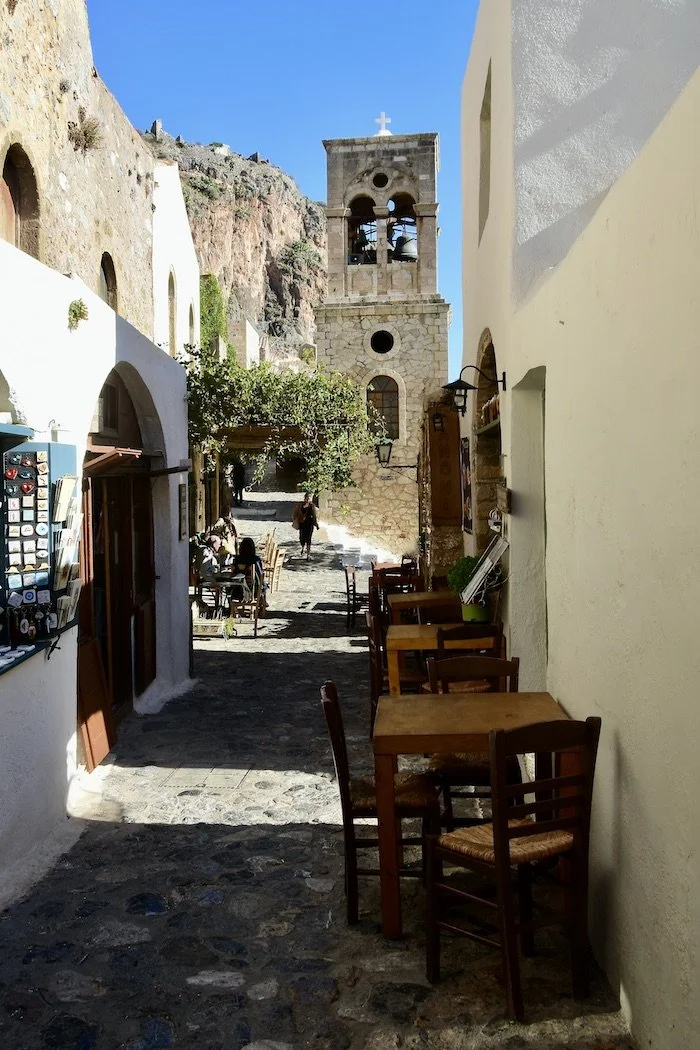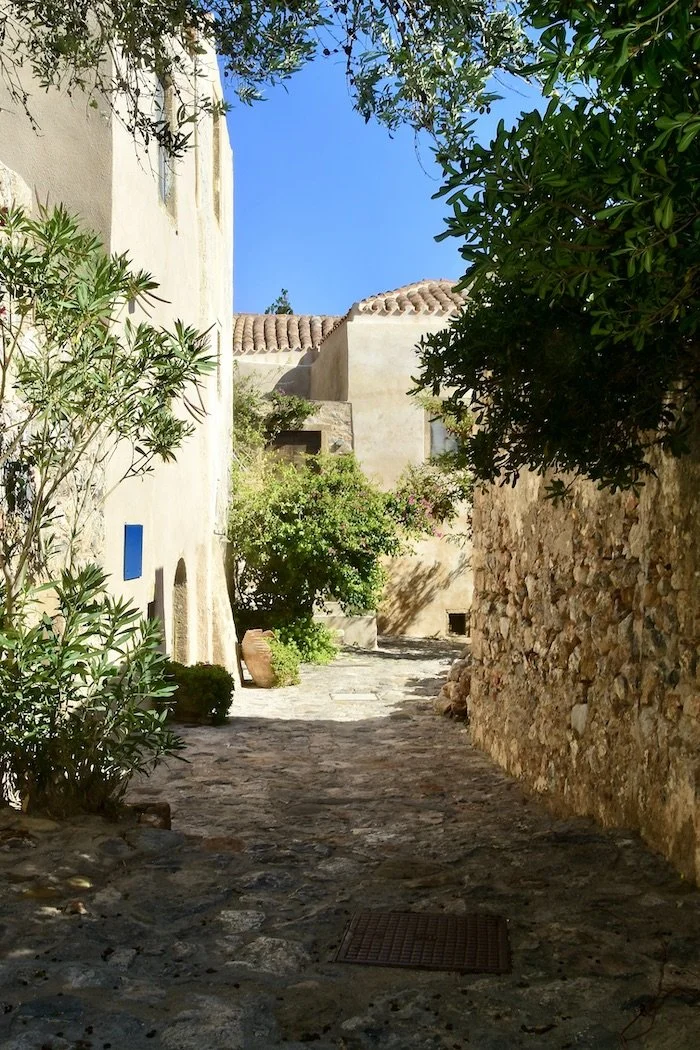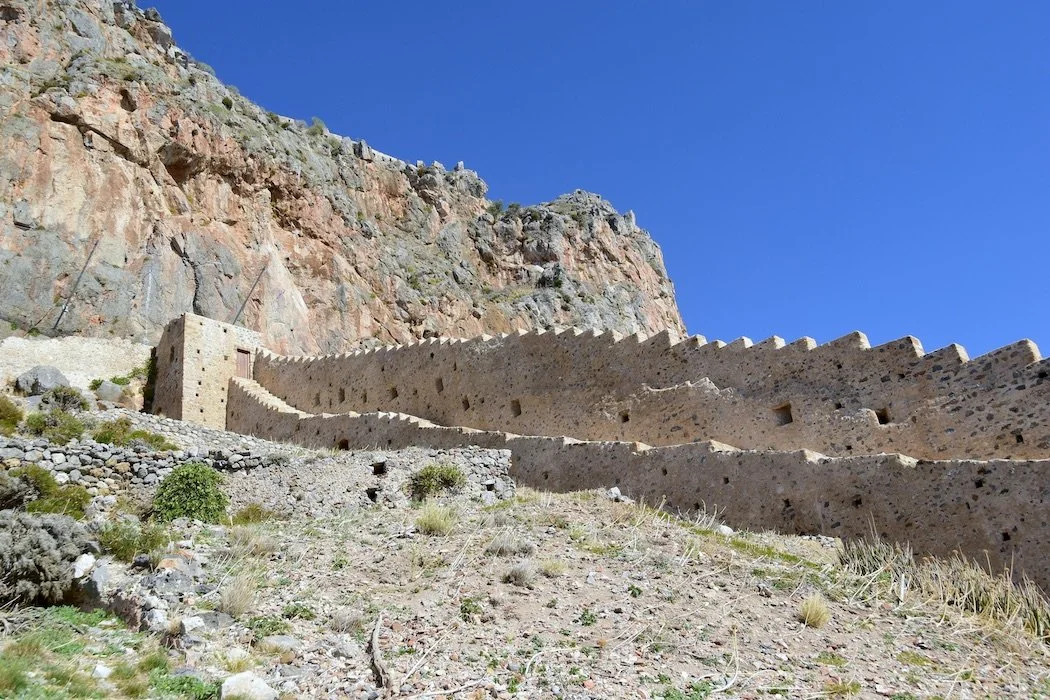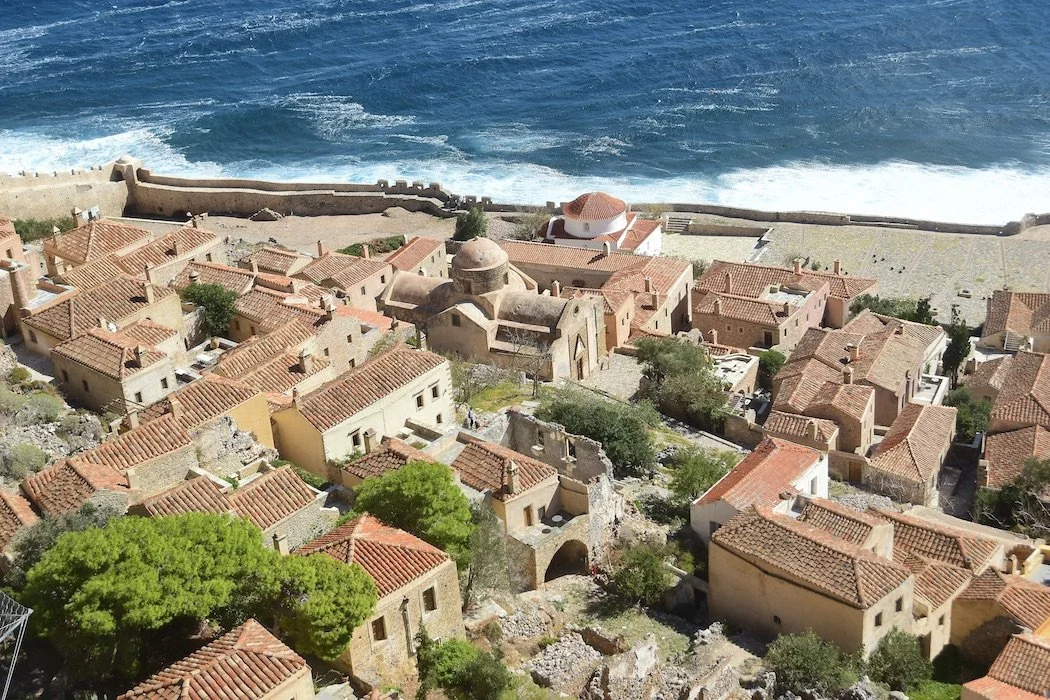Sail under the stars to Monemvasia
The rock of Monemvasia on an approach from the sea
“There was nowhere to go but everywhere, so just keep on rolling under the stars”. ― Jack Kerouac
The ideal way to approach Monemvasia, on the south-eastern edge of the Greek Peloponnese peninsula, is from the water. That reveals the breathtaking natural beauty of the rock that became a natural fortification when it was separated from the mainland by an earthquake in 375 AD. In the 6th century, the Byzantines founded the first city, the Citadel, which crowns the rock. The name comes from the narrow strip of land with a bridge that connects the rock to the coast of Laconia: “moni emvasis”, meaning one entrance. Until the late 19th century, a Venetian bridge with 14 arches and two towers had a drawbridge that was raised to prevent enemy attack.
Europe’s oldest continuously inhabited castle town, it was already an important trading port in the 10th century. Monemvasia was fortified during Byzantine rule and withstood Arab and Norman invasions before the Crusaders briefly ruled. In 1464, the Venetians arrived bringing prosperity. The building of houses and churches, all of local stone, flourished, and the population reached 30,000. The city eventually fell to the Turks who ruled for nearly 300 years from the mid sixteenth to the early nineteenth centuries, except for a short-lived intermezzo by the Venetians.
The unique walled lower town with its four gates in the thick rock wall remains an intact and inhabited fortified town, nestled below the rock crag on rough terrain at the edge of the sea. Exploring the completely pedestrian, uncrowded maze of alleys punctuated by shady squares is a joy at any time of year. The homes, all two or three story, with tile roofs, have basements where a cistern collects water, a ground floor kitchen, an upper floor for family living, and a rooftop terrace for processing and drying produce. Some now have tiny patios overflowing with flowering plants at the front or back door.
Though the population of this impressive stronghold was gradually depleted as inhabitants moved to the new mainland town, a restoration project has been underway to preserve Monemvasia’s charm and heritage. From the gate, Kalderimi street is lined with artisan shops selling local wares, as in past ages, with families living above. They are now joined by cafés, restaurants, and small hotels in Venetian mansions. Narrow cobbled lanes branch off to several lovely Byzantine churches including the oldest, Elkomenos Christos, a Muslim Mosque, and the Archeological Museum, housed in a 16th century building.
As in Naflpio in the northern Peloponnese, having an upper and a lower town means walking a lot of steps. The Upper Town, the former Citadel located on top of the rock, is reachable via Voltes, a stepped zigzagging path, and through the central gate. Once surrounded by a wall with towers, rifle eyelets, cannon portals, and sentry posts, it was an impregnable town and bastion that is now completely uninhabited. This Byzantine citadel was adapted by later Venetian and Turkish rulers, who also left ancient remains, including rocky, twisting roads, mansions, a hammam bathhouse complex from the second Turkish rule, and the Agia Sofia Church, which was twice converted to a mosque. Besides, wandering to the acropolis and admiring the church interior, the top of the rock affords fantastic views of the surrounding mainland and the Lower Town.
Don’t Miss:
Seeing the Upper Town and the view from the Citadel.
Lunch Tip:
Enetiko Cafe on the main street for good Greek salad and a view of the ocean from under the grapevine pergola.
Serendipity:
Locals along the way- Asking a local if a swimming spot is public and meeting a Greek/German/ Danish family for swimming and conversation.
Subscribe for inspiration to have my posts drop directly into your inbox. *If you enjoyed what you read, please share this post with like-minded travelers.*
*All photographs are mine, taken with my Nikon D5600 or iPhone 12 Pro.*

